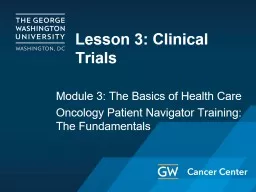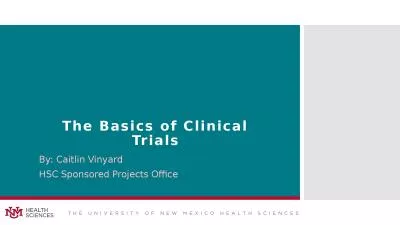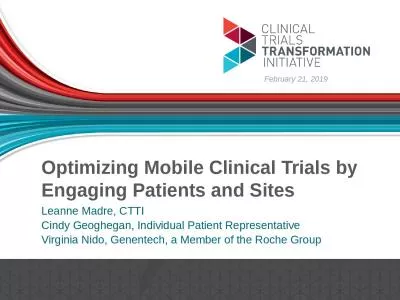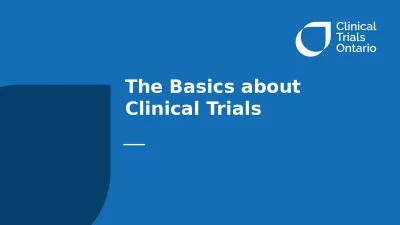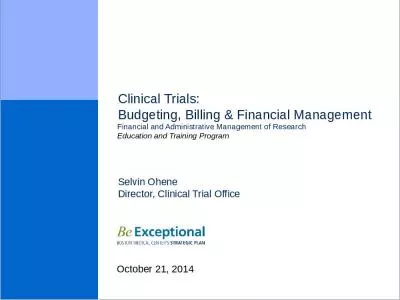The Basics of Clinical Trials By: Caitlin Vinyard
Author : sherrill-nordquist | Published Date : 2025-06-27
Description: The Basics of Clinical Trials By Caitlin Vinyard HSC Sponsored Projects Office What is a Clinical Trial Clinical trials or Clinical Study are defined in concurrence with NIH and Office of Human Protections HRPO guidelines NIH
Presentation Embed Code
Download Presentation
Download
Presentation The PPT/PDF document
"The Basics of Clinical Trials By: Caitlin Vinyard" is the property of its rightful owner.
Permission is granted to download and print the materials on this website for personal, non-commercial use only,
and to display it on your personal computer provided you do not modify the materials and that you retain all
copyright notices contained in the materials. By downloading content from our website, you accept the terms of
this agreement.
Transcript:The Basics of Clinical Trials By: Caitlin Vinyard:
The Basics of Clinical Trials By: Caitlin Vinyard HSC Sponsored Projects Office What is a Clinical Trial? Clinical trials or Clinical Study are defined in concurrence with NIH and Office of Human Protections (HRPO) guidelines. NIH Definition of a Clinical Trial: A research study in which one or more human subjects are prospectively assigned to one or more interventions (which may include placebo or other control) to evaluate the effects of those interventions on health-related biomedical or behavioral outcomes. Source: https://grants.nih.gov/policy/clinical-trials/definition.htm Phases of a Clinical Trial Clinical trials are conducted in a series of steps called “phases.” Each phase has a different purpose and helps researchers answer different questions. Phase I trials: Researchers test a drug, treatment or device in a small group of people (20–80) for the first time. The purpose is to study the drug or treatment to learn about safety and identify side effects. Phase II trials: The new drug treatment, or device is given to a larger group of people (100–300) to determine its effectiveness and to further study its safety. Phase III trials: The new drug, treatment or device is given to large groups of people (1,000–3,000) to confirm its effectiveness, monitor side effects, compare it with standard or similar treatments, and collect information that will allow the new drug or treatment to be used safely. Phase IV trials: After a drug is approved by the FDA and made available to the public, researchers track its safety in the general population, seeking more information about a drug or treatment’s benefits, and optimal use. Source: https://www.nih.gov/health-information/nih-clinical-research-trials-you/basics Types of Clinical Trials Diagnostic trials determine better tests or procedures for diagnosing a particular disease or condition. Natural history studies provide valuable information about how disease and health progress. Prevention trials look for better ways to prevent a disease in people who have never had the disease or to prevent the disease from returning. Quality of life trials (or supportive/compassionate care trials) explore and measure ways to improve the comfort and quality of life of people with a chronic illness. Screening trials test the best way to detect certain diseases or health conditions. Treatment trials test new treatments, new combinations of drugs, or new approaches to surgery or radiation therapy. Definitions IND: Investigational New Drug (Application) IDE: Investigational Device Exemption NDA: New Drug Application (for sale and marketing) IRB: Institutional Review Board –the “Ethics Board” FDA: Food and Drug







